Moira Butterfield's Blog, page 87
April 18, 2012
Twenty-five Years of Winnie Magic, by Pippa Goodhart
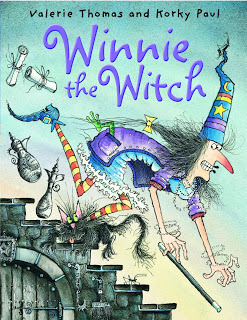 What is the magic that makes Winnie The Witch work so well?
What is the magic that makes Winnie The Witch work so well?The fist, eponymous, Winnie The Witch picture book came out twenty-five years ago this year, and on Friday the 13th of April and on Friday 13th of July Winnie will be celebrating her quarter century with birthday parties. (What? Didn’t you know that witches have birthdays every time there’s a Friday 13th?).
Over that quarter century, twelve picture books and eleven storybooks about Winnie and her cat Wilbur have been published, and more are in production. Winnie’s stories have be published in twenty-seven different languages, and sold over five million books.
For a picture book to grow into such a phenomenal, and on-going, success is the stuff of dreams. How did it happen?Ron Heapy is the brilliant OUP editor who created the Winnie we know and love by bringing Valerie aThomas’s story and Korky Paul’s illustrative skills together.
Ron had already signed contracts to publish the Winnie The Witch story text, aiming it towards a series of early reader titles, but the illustration samples that followed had shown an uninspiring black shed in a garden. So Ron had sat on the story for a couple of years, unsure what to do with it next.
At that point, in walked Korky Paul, bringing some stories of his own to discuss with Ron. Ron described as ‘a bit like falling in love’, the moment when, at their end of their discussion, as Korky was heading for the door, Ron suddenly felt an impulse to do something to make sure that Korky would come back, and for there to be the chance for a working relationship to develop. So he handed Korky the story of Winnie The Witch, telling him that it was to be a book of desk diary size, and asking him to see what he could do with it.
Back came Korky with a wonderful picture of Winnie’s witchy mansion of a house, “full of stuff”. It was Winnie's house, even more than Winnie herself, which sold Korky to Ron as the right illustrator for her story. All of which process just goes to prove the point made in Malachy’s last post about how a story sometimes needs to wait very patiently until just the right illustrator is there to work with it. I asked Korky where his image of Winnie came from, and he says that he has no idea. ‘I sat and doodled a few witch type characters and she came almost immediately.’ He calls the process, ‘Purely instinctive. The bent hat was because I reached the edge of the paper while doodling, and just squashed the hat to fit it in’!
Was Winnie an instant success? Ron tells me that he had contracted to do a print run of 3,000 copies. Then he went to the Bologna Book Fair where Winnie artwork went up on a modest little stall. And straight away, Winnie’s magic began to work, halting delegates as they passed, so that publishers from Germany and America and more placed orders to bump that initial print run up to 16,000 by the end of the Fair.
Winnie The Witch was published in 1987. It won the Federation of Children’s Book Groups’ Award, chosen by children, the following year. Everybody wanted more stories about her. But that first book was a hard act to follow. Hence the long pause before a second story – Winnie In Winter - was finally published in 1996. Many more have followed since then. But I still think that very first story is the best of them. Why is it so good? I think that’s partly down to:
The story being brilliantly simple, following a strong logic that twists at the end to surprise and satisfy with a really strong pay-off that we don't see coming (one of the hardest things to achieve in any story).The characters, and their relationship together, being appealing and sympathetic.The slapstick and ‘yuck’ humour being such fun, and so clearly at a fictional remove that there’s no worry to any of it.There being so much more to find of subsequent viewings of those wonderful pictures.The story being about the look of things, and therefore perfectly suited to picture book treatment.The appeal of the idea of being able to do magic. I love those great swishes of magic that appear as splashes of colour. I wish I could splatter magic about like that! The inspiration for the magic to look that way apparently came from watching the Red Arrows!I think that Winnie The Witch is one of the best picture books ever. Can you suggest other ‘perfect’ picture books? Or give other reasons for Winnie's success?
NB To read more about how Korky does his illustrations, do read the fascinating article that you can find on his website
Published on April 18, 2012 16:03
April 14, 2012
Mysterious Number Three by Paeony Lewis
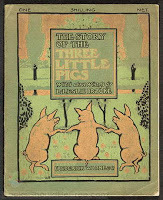 What is it about the number three in storytelling? There are traditional tales such as The Three Little Pigs, Three Billy Goats Gruff, Goldilocks and the Three Bears. Then there are the lesser-known tales: The Three Sillies, The Devil with the Three Golden Hairs, The Three Snake Leaves, and so many more.
What is it about the number three in storytelling? There are traditional tales such as The Three Little Pigs, Three Billy Goats Gruff, Goldilocks and the Three Bears. Then there are the lesser-known tales: The Three Sillies, The Devil with the Three Golden Hairs, The Three Snake Leaves, and so many more.Even if three isn’t in the title, three still sneaks into countless fairy stories. Rumpelstiltskin gives the miller’s daughter three spinning wishes and she has three guesses at his name. Cinderella goes to three balls and there are three sisters. Jack steals three treasures from the giant at the top of the beanstalk.
 How about contemporary picture books? That number three sneaks in again. There are three owls in Martin Waddell’s classic Owl Babies. Whilst in the deep dark wood a little mouse meets three animals (a fox, owl and snake) in Julia Donaldson’s The Gruffalo. And I've just realised I have three young bunnies in Hurry Up, Birthday.
How about contemporary picture books? That number three sneaks in again. There are three owls in Martin Waddell’s classic Owl Babies. Whilst in the deep dark wood a little mouse meets three animals (a fox, owl and snake) in Julia Donaldson’s The Gruffalo. And I've just realised I have three young bunnies in Hurry Up, Birthday.Even if there aren’t three characters, then things happen three times. Winnie the Witch waves her wand again, and again and again . Helen Cooper’s Bear Under the Stairs is fed one day with bananas, bacon and bread. Another day it’s hazelnuts haddock and honey. And the door is always shut with a wham, bang and thump.
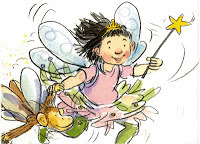 From No More BiscuitsSo why three? Why, in writing, is it called The Rule of Three or Magic Three? Perhaps because three times is a pattern. Two can be a coincidence, but three is something more. It’s more satisfying. It’s the beginning, middle and end. It flows and has rhythm.
From No More BiscuitsSo why three? Why, in writing, is it called The Rule of Three or Magic Three? Perhaps because three times is a pattern. Two can be a coincidence, but three is something more. It’s more satisfying. It’s the beginning, middle and end. It flows and has rhythm.If a fairy casts one spell and it doesn’t succeed, then you’re setting up tension. If she casts the spell again and it succeeds, then it feels a bit of an anti-climax. But if she fails a second time, things are getting tenser. Will she succeed on the third attempt? We hold our breath… Yes! Ah ha, but what if she fails again, surely the tension will rise further? Maybe, or will it start to get boring?
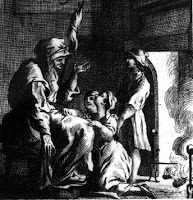
Mind you, sometimes I find the rule of three can be too predictable, especially in films. You just know the hero will try once, twice and then succeed on the third attempt. Yawn. However, perhaps this predictability was helpful when stories were told around the fire, hundreds of years ago. You need a clear story structure to follow a story told orally, and it also helps you to remember it for another night. This might be why three is also popular with stand-up comedians: Three men went into a bar; an Englishman, a Scotsman and an Irishman…
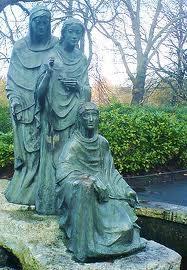 So in storytelling, three can provide a satisfying pattern. Whether it’s the three Norns in Norse mythology; the three Anglo-Saxon monsters battled by Beowulf; or the Greek Three Fates, Graces or Furies. However, it doesn’t stop there.
So in storytelling, three can provide a satisfying pattern. Whether it’s the three Norns in Norse mythology; the three Anglo-Saxon monsters battled by Beowulf; or the Greek Three Fates, Graces or Furies. However, it doesn’t stop there.In art there’s a rule of thirds. Pythagoras called three the perfect number. We also have three primary colours (red, blue and yellow). In Christianity there is the Trinity of the Father, Son and Holy Ghost. On the third day Jesus rose from the dead. In Hinduism you have the Trinity: Brahma, Vishnu, Shiva. Three is our past, present and future. Birth, life and death. Veni, vidi, vici. Symbolic three is everywhere.
In our writing, is it lucky three? Other numbers are endowed with symbolism, although three does appear to be particularly popular in Western writing. So should we use it in our picture books? Why not, if it works? We probably do it subconsciously. But if we use it too much, will the magic of three wane?
1 2 3 1 2 3 1 2 3
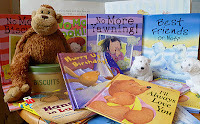 Paeony Lewis is a children's author.
Paeony Lewis is a children's author.http://www.paeonylewis.com/
Published on April 14, 2012 00:00



